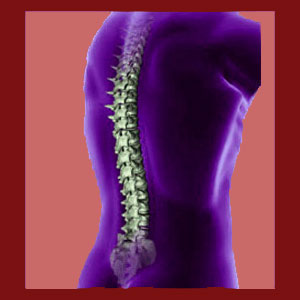
There are many facet syndrome misconceptions circulating in the diagnosed patient population. Most of these misunderstandings are the direct result of poor patient education and the illogical manner in which so many cases of facet degeneration are diagnosed. We have observed a huge problem of misdiagnosis among back and neck pain sufferers who have been told they are suffering from facet joint syndrome.
Why is facet joint pain so grossly misunderstood? How can patients really believe the diagnosis of facet joint syndrome when their symptoms are far too wide-ranging to possibly come from the sources being blamed? Most importantly, why do these same patients rarely find cures for their pain, despite active and sometimes surgical care? We will provide the answers to all of these questions and more during the course of this focused discussion.
This dialog provides clarification of the facet syndrome diagnosis and helps patients to better advocate for themselves. We will discuss why facet joint pain is often misdiagnosed and detail the evidence of such misdiagnosis in the symptomatic expression. We will also reiterate the primary reason why most patients with chronic facet joint pain do not find relief, despite attempting a diversity of treatments.
Facet Syndrome Misconceptions
It is vital for patients to understand that the facet joints contain tiny nerves that can be irritated from various forms of injury and extreme versions of degeneration. The result of this irritation is mild to moderate highly localized pain, particularly upon movement of the affected facet structure. However, pain is not universal and most facet deterioration is mostly asymptomatic or transiently painful to a minor degree.
Widespread pain is not typical of facet joint syndrome. Pain that exists largely in the muscles or anywhere off the center of the vertebral column is surely not related to facet pathology. Severe pain is not at all characteristic of typical facet joint syndrome. Pain that exists when the spine is rested and not being mobilized is extremely unlikely to come from any facet joint issue. Radiating pain is not typical for facet joint pathology. In fact, the vast majority of symptoms often linked to facet joint diagnoses are completely illogical from a scientific viewpoint.
It is vital to completely understand and accept these objective truths in order to benefit from the guidance contained in the remainder of this essay.
Facet Syndrome Misdiagnosis
So many patients complain of back pain or neck pain and are sent for diagnostic evaluation. Many will receive CT or MRI testing that will seek out structural abnormality in the spine. This is true regardless of the type of pain being suffered.
Since spinal abnormalities should actually be called normalities, due to their universal or near universal occurrence in adults, it is almost a sure thing that some form of irregularity will be found. Degenerative disc disease is universal. Herniated discs are nearly universal. Changes to lordosis and kyphosis are very commonplace (and often results of pain, rather than causes), spinal and foraminal stenosis is nearly universal and of course, facet joint degeneration is universal, as well, particularly in the mid to low cervical and lower lumbar spinal zones.
Facet joint syndrome is rarely indicated as the source of pain when a disc abnormality is present in the approximate region of pain. This is because disc abnormalities are even greater scapegoats than facet joint degeneration when it comes to being blamed for pain. However, when no disc abnormality is present or logical in presentation, then the facet joints can act as ideal scapegoats for pain, even when the symptoms do not align from a medical POV.
Facet Syndrome Mistreatment
Why does facet syndrome treatment fail so often or only provide temporary relief? This is the easiest question to answer if you have been reading along so far… Any treatment which is directed at a misdiagnosed spinal issue will most certainly fail. After all, it is not targeting the true symptomatic source.
Furthermore, many treatments are only symptomatic in nature and will never provide a cure, even if the diagnosis was right, which it typically is not…
Treatment for chronic back and neck pain is one of the most profitable of all medical specialties. Since most patients do not question their doctors (even when the diagnosis is obviously wrong, such as when facet joint syndrome is blamed for causing widespread, severe and obviously muscular back pain!), mistreatment has propagated to an epidemic level, explaining why so few patients find relief from any type of chronic pain.
Knowledge will help you to break the cycle of failed treatment and misdiagnosis. Learn more and you will fare much better when it comes to protecting your own health interest in the face of an economically-motivated healthcare system that sees you primarily as a bank account waiting to be depleted.
Make sure to demand comprehensive symptomatic correlation from a neurologist before accepting any theory of facet joint syndrome. This step will help to eliminate coincidental facet degeneration as a focal point of diagnostic attention, allowing doctors to advance forward and find the true source of your pain.
Facet Joint Pain > Facet Joint Syndrome > Facet Syndrome





